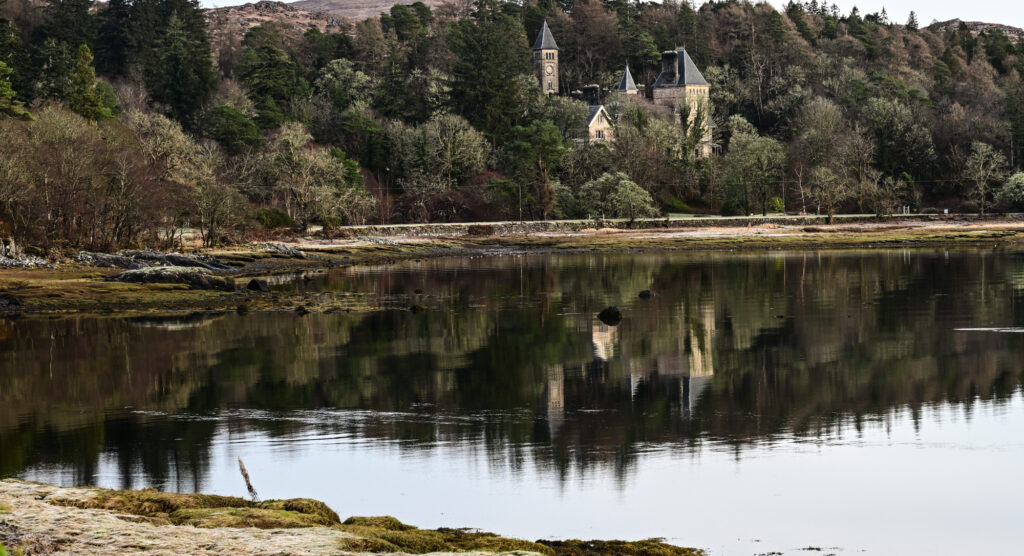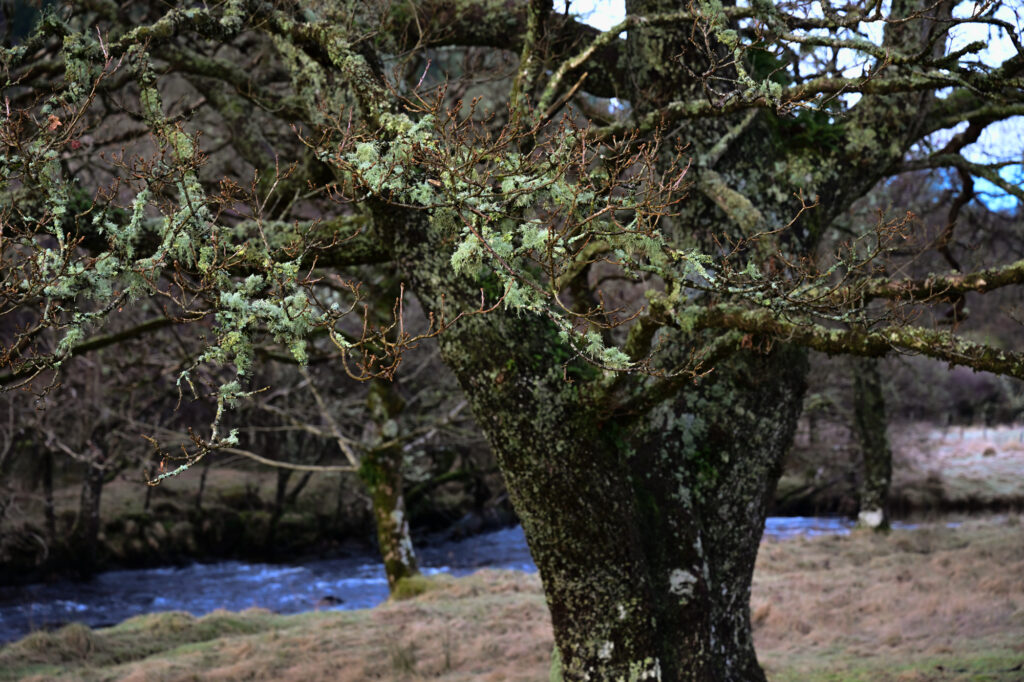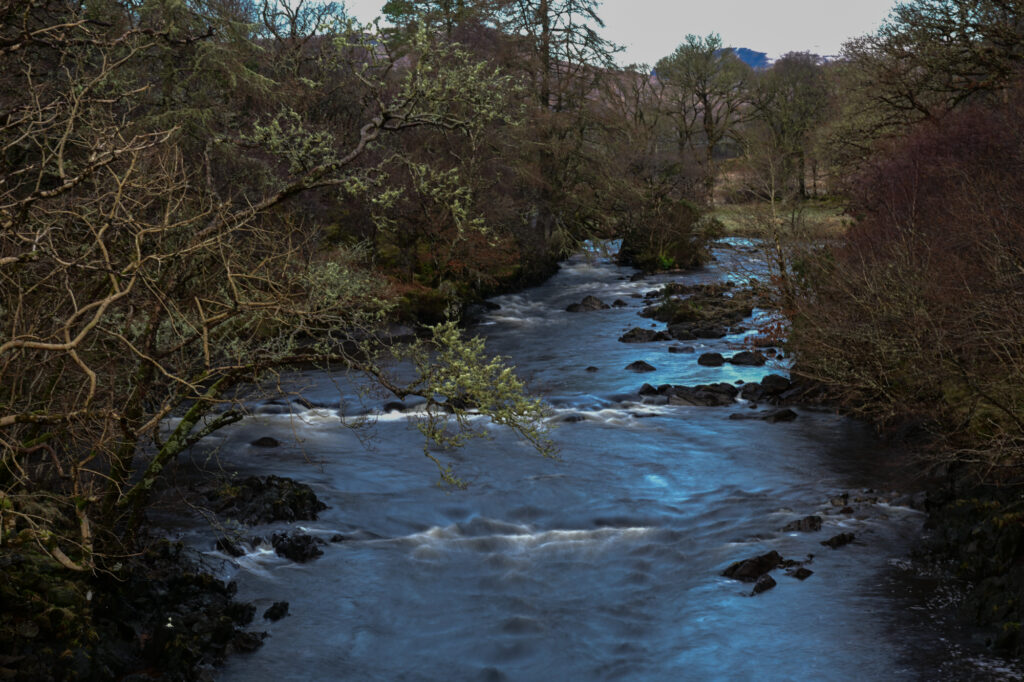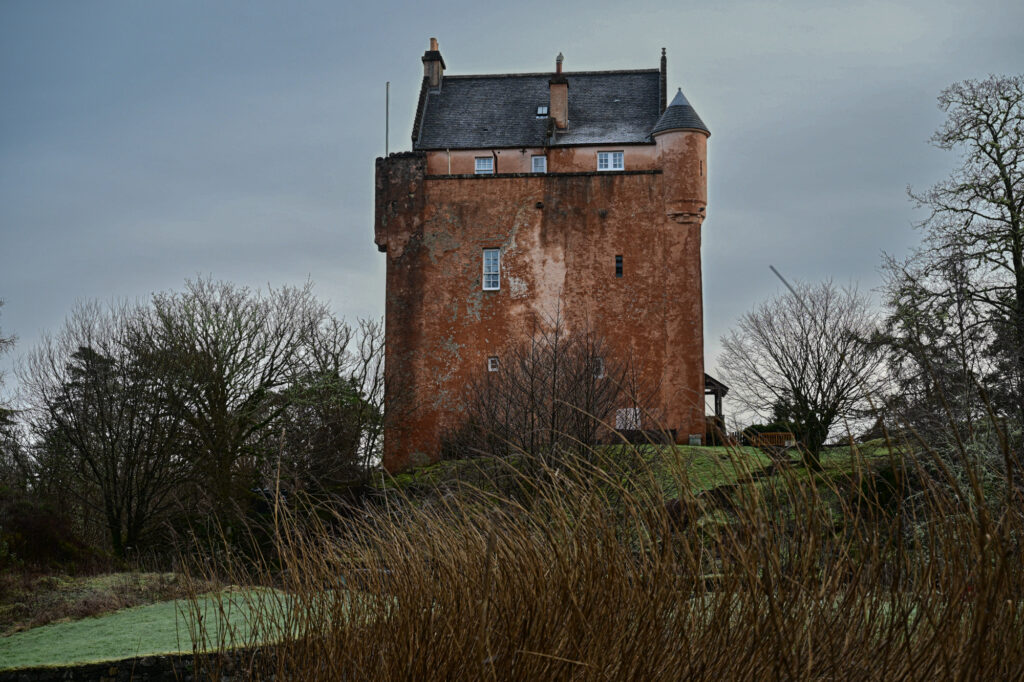This was a perfect day to walk around the estate and take in the natural beauty. Once again I found myself wondering what it was like when the Lords of the Isles stalked deer in these hills. As I walked along the estate gravel road leading to other cottages I pondered how to deal photographically with the unique winter light. The sun never rises fully into the sky but maintains a low arc throughout the day. Most days there are clouds playing games with the sun. This winter light renders the colors – most notably the greens – in the woodland scenes on the Ardtornish Estate more vibrant than as if they were bathed in full sunlight. The 35,000 acre estate spreads out around Loch Aline, a huge, wooded, U-shaped bay. The tide on the loch is significant and provides for some beautiful reflections when at its peak. It retreats leaving dark rocks and golden vegetation exposed until it comes in again. The contrast is distinctive.
In addition to being the site of Ardtornish Castle further down the peninsula the property is home to Kinlochaline Castle, a 15th-century Scottish tower house also known as Caisteal an Ime ( Gaelic for Castle of Butter) because a lady of Clan MacInnes, Dubh Chal (Lady of the Black Veil), is said to have paid the builder with butter equal to the volume of the castle. The castle sits in a commanding position atop a rocky summit at the head of Loch Aline, an area once occupied by Clan MacInnes. After the lands were granted in a charter to Clan MacLean the MacInnes and MacMaster’s remained as keepers. The structure is four stories tall, 43 by 34 feet (13 by 10 metres), with walls that are 10-foot-thick (3-metre) blocks of rare sandstone. After being burned and abandoned the current castle has been rebuilt over the years and is now a residence. A more detailed description can be found here. https://canmore.org.uk/site/22432/kinlochaline-castle








